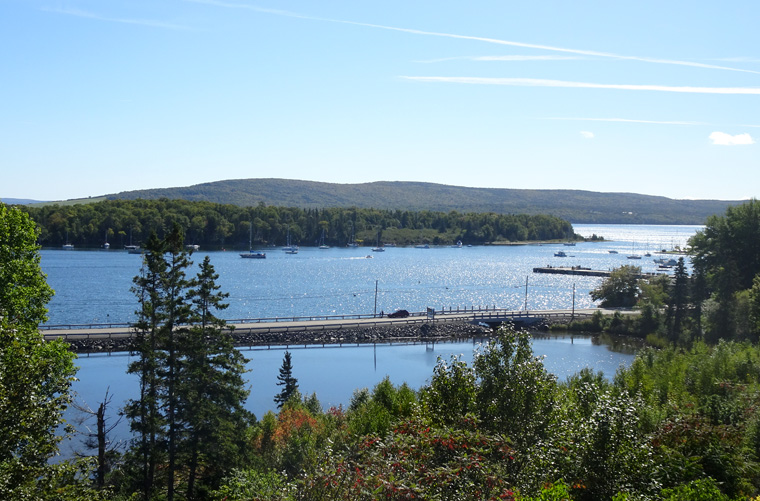Sunday Sep 30, 2018
Map and road video – Sydney to Baddeck, NS via Louisbourg
Today was spent visiting two National Historic Sites that were very different from each other and the other historic sites that I have visited.
The first was the magnificent Fortress of Louisbourg National Historic Site overlooking the Atlantic near the eastern tip of Nova Scotia. The fortress was built to protect Louisbourg, the capital of the French colony of Île-Royale and main North American port for French ships, and also to defend the valuable offshore fisheries. By 1745, Louisbourg had grown to a city of 3,000 inhabitants and the fortress was likely the most expensive in the world.
The unusual thing is that almost nothing you see is historic. The site is a faithful reproduction of one quarter of the city of Louisbourg as it existed in 1745. There is a exhibit showing how the reproduction was created from detailed records kept by the French, death inventories of its citizens and church records as well as detailed archeological research. The reproduction was started in 1961 as a government project to re-train and employ former miners when the local coal mines closed and the area had become economically depressed. The construction continued into the 70s and has revived the local economy as tourism income has helped offset losses from the more recent decline of fishing in the North Atlantic.
There were actors in each building, representing the inhabitants of Louisbourg, who were able to describe the purpose of the structure or the lives of the family that was living there at the time. Despite its size and expense the fortress twice surrendered to the British after sieges. The local British colonists were furious when it was returned to the French in a treaty after the first siege and they systematically destroyed the original fortress after the second.
My second stop was at the Alexander Graham Bell National Historic Site in Baddeck overlooking Bras d’Or Lake. Bell adopted Baddeck as his second home while working in Washington, DC as it reminded him of life in his native Scotland and built large research facilities to perform experiments here later in his life.
The unusual thing about this “historical site” is that it’s not on the site where Bell’s estate existed but, essentially, is simply a museum built to house the artifacts bequeathed to the Canadian government by his successors. Nevertheless, it was very interesting to read about his life and the scientific work he did that I had not known about. Of course, he invented the telephone but he also invented the gramophone, designed and helped build the first plane to fly in Canada and made huge developments in the design of hydrofoils among many other achievements. In 1917 he built a hydrofoil at his shipyard in Baddeck that could travel at 70 mph (114 mph) and that held the world marine speed record for 20 years. The passion that first aroused his inventive curiosity was in creating devices and methods to help the deaf hear and communicate and he continued that work throughout his life.
The original Fortress of Louisbourg was just foundations before the Canadian government decided to reconstruct it.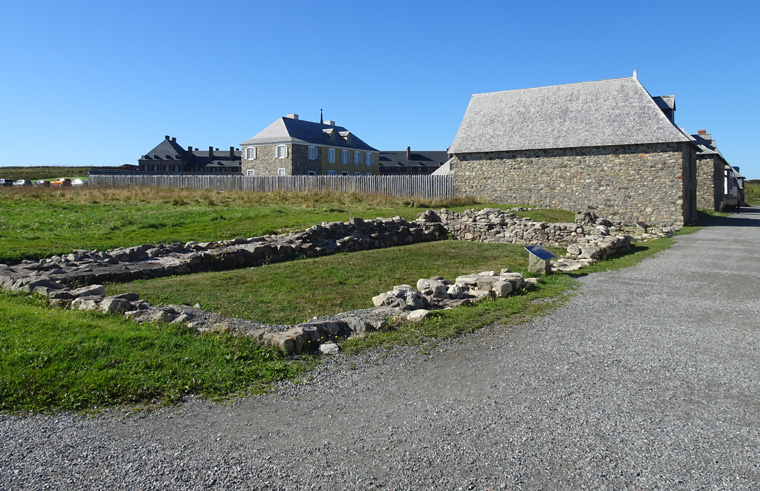
The reconstruction of the city is accurate and detailed both inside and out. This is the inside of one of the family homes.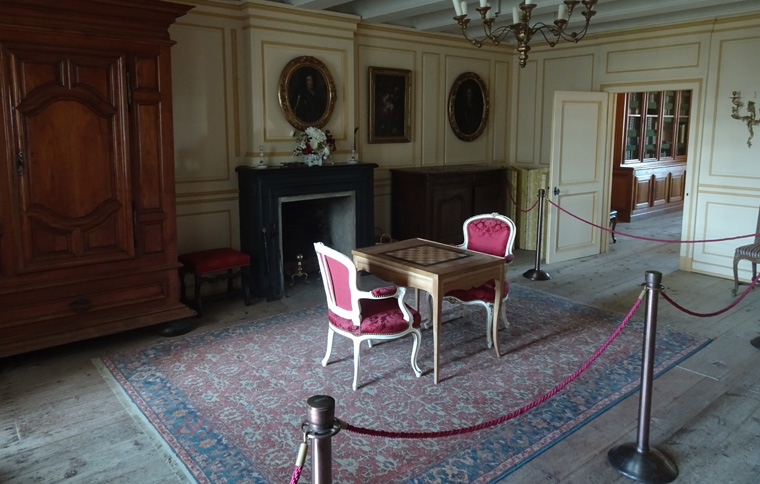
The main compound of the fortress. There were many characters on hand to interpret for visitors.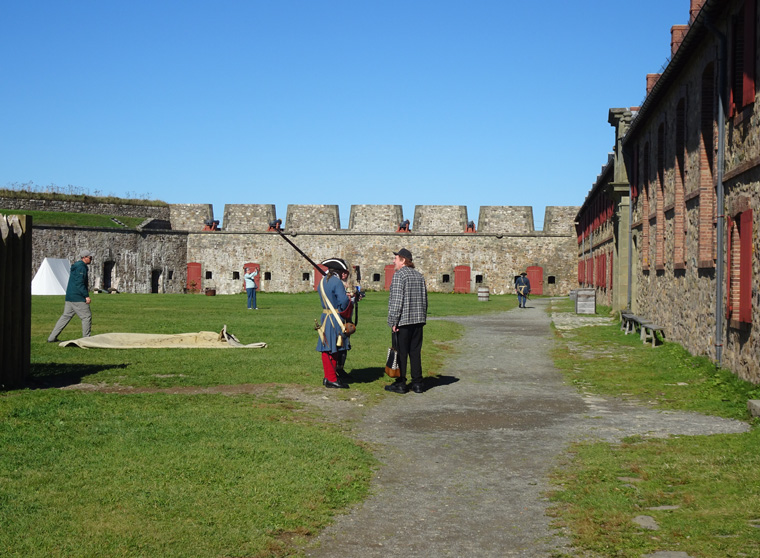
This magnificent building contained the governors quarters, the chapel and barracks.
The location faces the Atlantic but is protected by a narrow channel.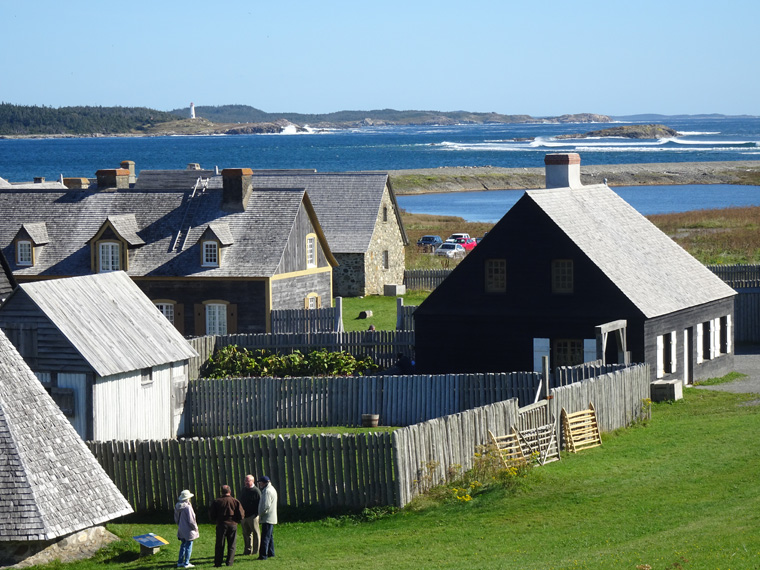
Alexander Graham Bell’s record breaking hydrofoil, HD-4. In the foreground is a full size model and the remains of the original are along the back wall.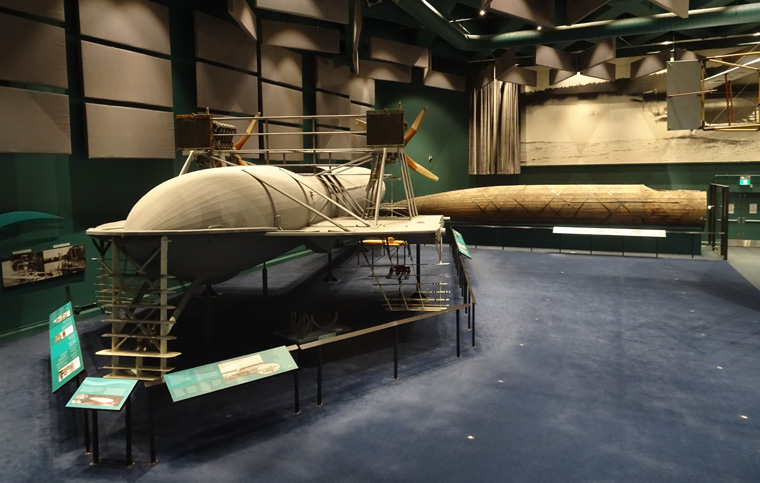
A view of Bras d’Or Lake from the Bell historic site in Baddeck.